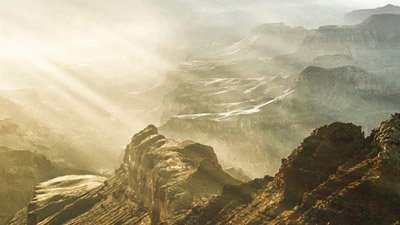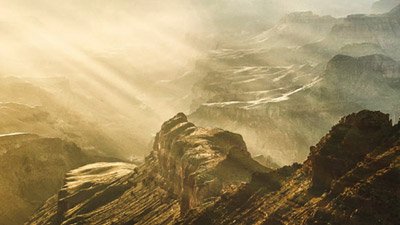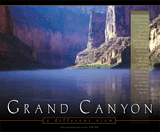
Carving the Grand Canyon: Eons or Years?
If you thought six million years was too old an age for the Grand Canyon, think again—or at least, that’s what a group of scientists from the University of New Mexico argues in a recent Science paper.
News Source
- USA Today: “It Took Eons to Make Grand Canyon Grand”
The team presents new evidence that purportedly shows how the western half of the Grand Canyon began to open “at least 17 million years ago.” The evidence was gathered from caves in the canyon’s limestone walls.
Since the Colorado River that traverses the Grand Canyon runs east–west (like the canyon), with the western end downstream, one wonders how that end could be older. Geologists explain, however, that the Grand Canyon was chiseled by separate drainage systems that eventually joined to form the one canyon.
The team decided to test formations inside the caves that line the walls of the Grand Canyon—caves that protect their innards from erosion. The team figured the caves might provide evidence of the water table dropping over time as liquid sliced the canyon deeper and deeper.
Using uranium-lead isotope testing, the team found that the western side of the canyon started forming 17 million years ago, eventually joining the eastern side around five to six million years ago. They speculate the eastern side of the canyon was formed more quickly—between eight inches and a foot (20–30cm) each thousand years instead of only two inches (5cm) per millennium. The team credits this speedup to a shifting landmass, with different sections of rock being torn upward and downward.
One key problem is, the team has based their conclusions on radiometric dating, which time and time again has been shown to result in unreliable dates that conflict with other dating methods.
The Associated Press quotes University of Colorado–Boulder canyon expert Rebecca Fowler, who explains, “All of it is pointing toward a pretty complex history of Grand Canyon development, which is one of the reasons this area has been so controversial. It’s a pretty complicated system and it’s very likely that the entire Grand Canyon did not incise (cut) all at one time.”
What’s incredible is that even amid ample evidence that canyons can be carved within an extremely short period of time, those who believe in an ancient earth (a requirement of Darwinian evolution, by the way) stick to the idea that water might only erode an inch or two of rock in a thousand years! Yet in three days in July 2002, a flood caused by the overflow of Canyon Lake in Texas carved a mile-and-a-half-long canyon up to 80 ft (24m) deep in places (see “Texas’s Miniature Grand Canyon”). Imagine what a global Flood could cause—one caused by forty days of rain and subterranean eruptions of water that transcended the then-highest mountains and covered the earth for a year!
Answers in Genesis is committed to using catastrophic, Flood-based model to explain the earth’s geological features. Why not read some of our research now?
Further Reading
- 3.9 The Grand Canyon
- Geology
- Does Radiometric Dating Prove the Earth Is Old?
- The Flood
- Radiometric Dating
For More Information: Get Answers
Remember, if you see a news story that might merit some attention, let us know about it! (Note: if the story originates from the Associated Press, FOX News, MSNBC, the New York Times, or another major national media outlet, we will most likely have already heard about it.) And thanks to all of our readers who have submitted great news tips to us. If you didn’t catch all the latest News to Know, why not take a look to see what you’ve missed?
(Please note that links will take you directly to the source. Answers in Genesis is not responsible for content on the websites to which we refer. For more information, please see our Privacy Policy.)
Recommended Resources

Answers in Genesis is an apologetics ministry, dedicated to helping Christians defend their faith and proclaim the good news of Jesus Christ.
- Customer Service 800.778.3390
- © 2024 Answers in Genesis





